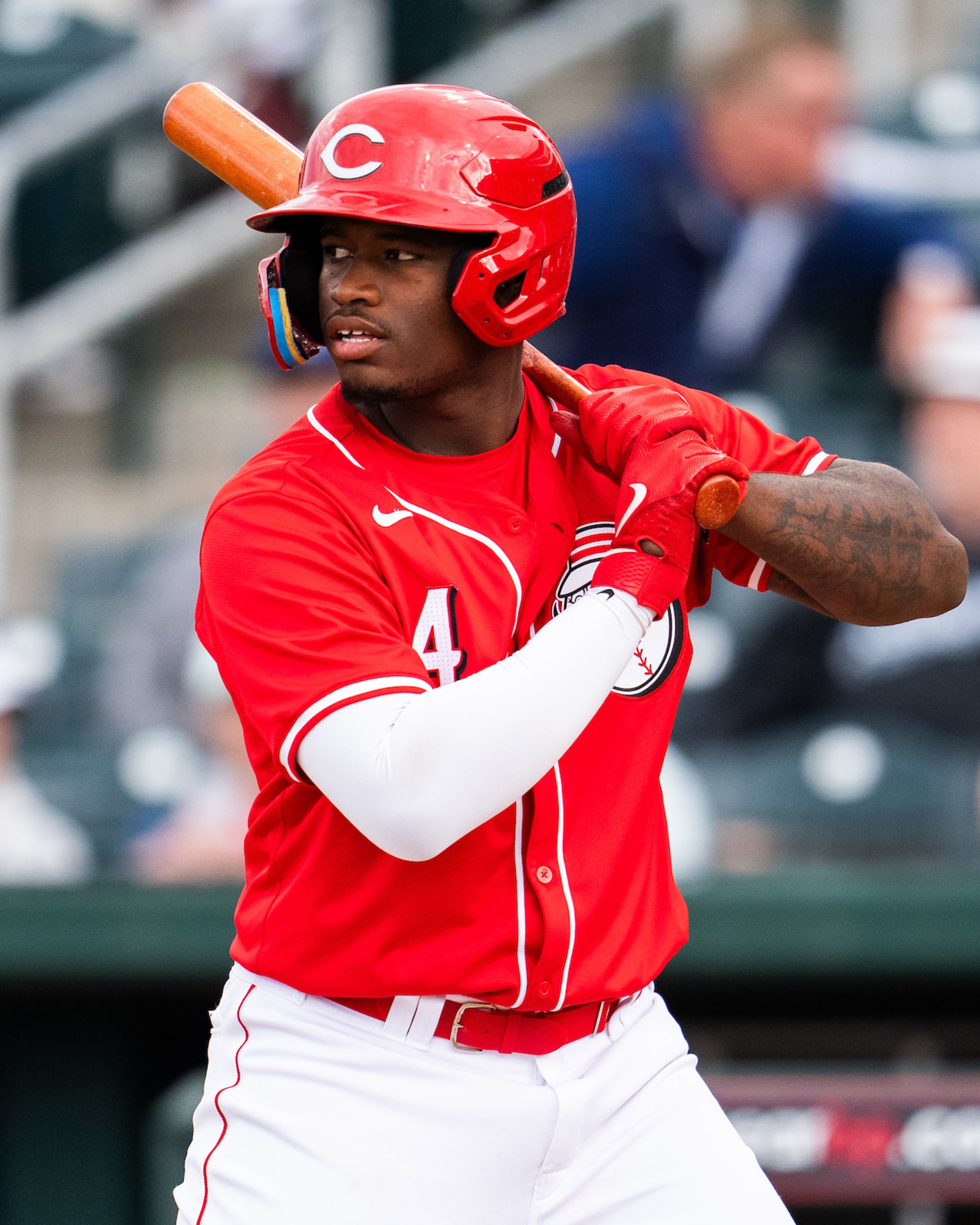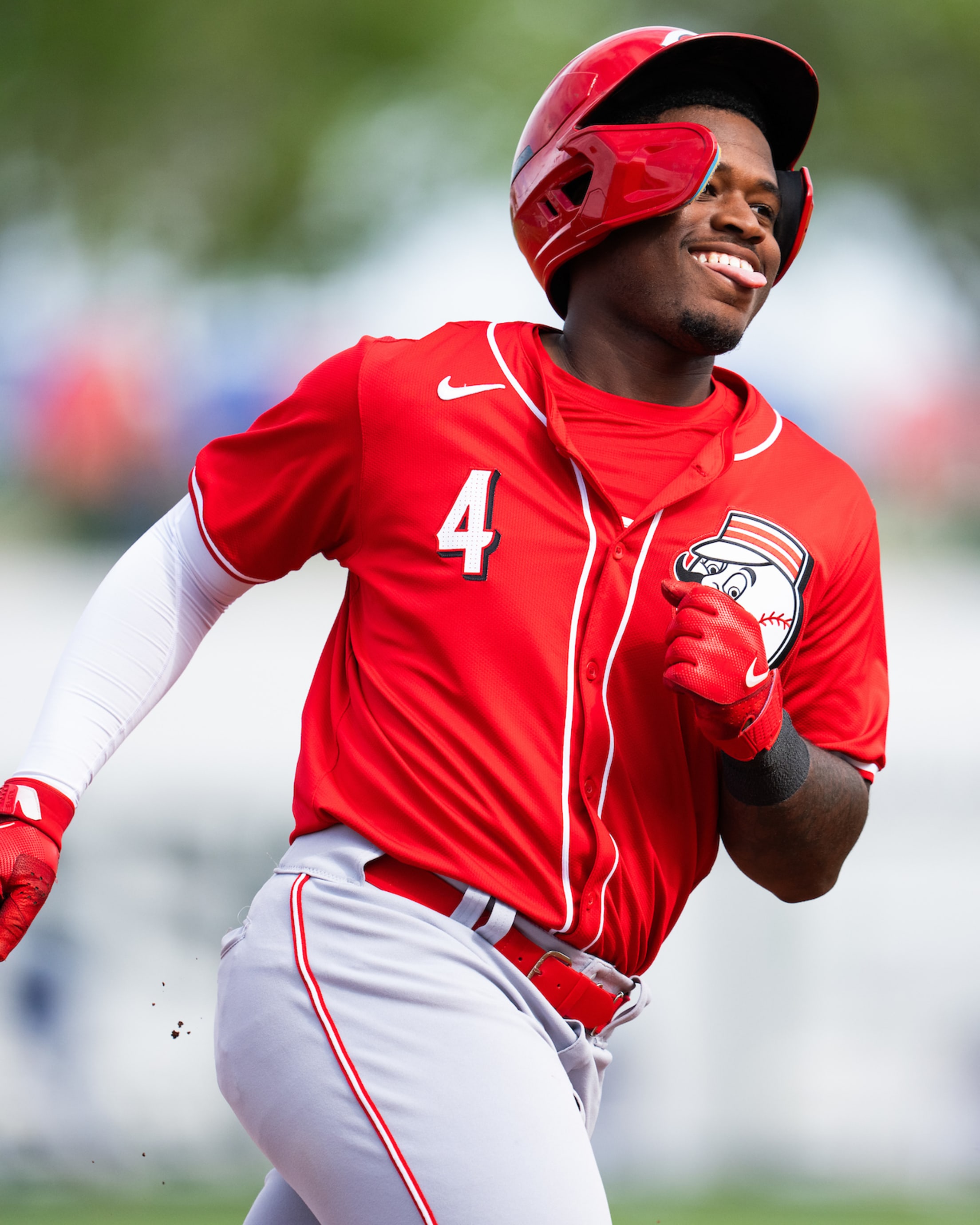At the start of November, Reds Senior Director of Player Development Jeremy Farrell spoke about the current state of the Reds’ farm system, including players in the Arizona Fall League, recent draft picks, standout performances in 2024, the development of the organization's top prospects, and more.
Matt McLain missed all of 2024 (shoulder) and Christian Encarnacion-Strand (wrist) missed most of the season. Both are participating in the Arizona Fall League. How have they looked in their first game action since returning from injury?
JF: It's been really positive. Their playing in the Fall League is twofold. One, to try to make up for some lost at-bats during the season. And two, to gain confidence going into spring training that they are healthy and ready to compete for a job in 2025.
Another guy who missed all of last year was the organization’s No. 3 prospect, Edwin Arroyo. How is he feeling so far in his return to game action in the AFL and looking ahead to spring training?
JF: Similar boat as Matt and Christian. So, looking to make up some of the at-bats and get out and get the reps to shortstop as he gets ready for spring training. But, he's been healthy. All's been good with Edwin.
There are five other players in the Reds system playing for the Glendale Desert Dogs in the Fall League. Luis Mey (pitcher) has been fantastic, and Jose Acuna has also pitched well. Tyler Callihan has shown consistency in the leadoff position. What have you seen from those guys specifically along with some of the other prospects over the last month in terms of what they’ve changed or built upon from the 2024 minor league season?
JF: Several of the guys who are playing in the Fall League this year are there to make up for lost time. You mentioned Callihan. He's picked up out here in Arizona right where he left off after coming back from injury this year in Double-A. And then when he got to Triple-A, the consistency of the at-bats and he's been exposed to left field more often here in Arizona. So it's been a really positive couple of weeks for him. Luis has been outstanding. Consistency of strikes and quality strikes has been his biggest thing on the development side. And he's gone out and been aggressive and performed really well to date. And then Acuna, trying to log some more innings after some missed time during the year. But he's come out and done exactly what we think he has the ability to do in the future. He's got pitchability, a good feel for what he's trying to do. And he's been really fun to watch.
With the 2024 season now behind us, how would you assess the current state of our farm system as a whole?
JF: There were guys who took big steps forward this year. You look at Cam Collier and how his season went. Got off to a hot start. The league adjusted to him a little bit, and he made the adjustment back and finished really strong, putting together quality, consistent at-bats and hitting for power. It was an outstanding year for Cam. A guy like Nestor Lorant who's not going to blow you away with velocity but showed the ability to pitch with changing speeds. He showed a quality changeup at the A-ball levels this year and put together a solid year. Before Sal Stewart got hurt, he was continuing to progress and do the things that we felt like he had the ability to do when we drafted him. Advanced feel to hit, advanced feel for the strike zone, knows what he's trying to do. He was taking steps forward defensively, both at third base and second base. So those are a few of the guys that stand out this year. Obviously Lowder flew through the system. He figured some things out in Double-A that would set him up to go on the run that he had in the big leagues. I feel like he'll only continue to get better as he gets more comfortable with the professional game.
You mentioned a couple of the guys from the Dayton team that made it to the High-A playoffs. The Dragons offense featured Collier, Stewart, Hector Rodriguez, Carlos Jorge and then Ethan O'Donnell who has come on strong from the 2023 draft. You must be pretty excited about the bats coming through the system with that group.
JF: For sure. You mentioned Hector. He took steps forward this year, not only at the plate and continuing on what he did in Winter League last year in the Dominican, but also just the pride that he took in working on his defense, his base running, and becoming more of a complete player. Ethan O'Donnell finished the year strong for the second year in a row. Plays an advanced outfield. He's a tough at-bat. He's willing to bunt. He's got the ability to impact the game on the bases. Those are all guys that we're excited about coming into 2025.
You talked about a couple of the ’23 draft picks in Lowder (Round 1) and O'Donnell (Round 6). How would you assess some of those other higher round picks in their first full pro season? Are you liking where they're at so far?
JF: It was a really positive year for Sammy Stafura. He stayed back in extended spring training when we broke camp. He didn't sulk and took it upon himself to continue to prove that he belonged in Single-A Daytona in 2024. He went out and he did that. When the opportunity arose, he went to Daytona and continued to improve. The kid loves to play baseball. He works. He has fun. He played a really, really solid shortstop. The quality of the at-bats got better as the season progressed.
How are things with Ty Floyd? Will he be on track to play at the start of 2025?
JF: He will be. He's in Arizona right now working out. He'll head home soon for what should be a fairly normal offseason. Will probably come back a little bit early in January and should be ready to go for spring training.
Some of the pitchers that were high on the team's radar heading into this year, Chase Petty and Connor Phillips, faced some obstacles in 2024, especially early on. What can you say about their development in the season’s second half and how do you see the current trajectory of those guys?
JF: Outstanding year for Chase Petty. He took the ball, he stayed healthy. Not only did he mature in what he was trying to do as a pitcher and attacking hitters, but also just the way he went about his business. Whether it was his preparation or the way he navigated a game, we challenged him with Triple-A at the end of the year and felt that overall it was a really, really good year for Chase. Connor is in the Fall League right now working on some of the things that he spent time during this year working on in an effort to become more consistent in the strike zone. Let the electric stuff that he has play up more consistently. I feel like the last couple of weeks in Arizona have been solid steps forward for Connor. We feel like both Chase and Connor have the ability to impact our major league team in the future.
I think Nestor was a good example of this, but are there any other “under-the-radar” players that stood out to you this season? Someone fans might not know about that could be poised to make a big jump next year?
JF: Dominic Pitelli. A guy who started the year in Daytona Beach, a plus defender at shortstop as well as the other infield positions. He went to Daytona and put up really advanced, quality at-bats. And I believe once we got into mid-May, we felt that he was ready to make a jump to the Double-A and he spent the rest of the year there. But I feel like what he brings to the table as a complete baseball player, he's got a chance to be a solid player for us in the future.
This year, the Reds had the number two draft pick and selected Chase Burns. How are Chase and some of those other selections from the ’24 draft class looking as they approach their first full season of pro ball?
JF: All those guys will come to spring training and compete for jobs. Chase did not pitch competitively this year, but he's healthy, he's ready to go. No red flags there. But he finished instructional league with a couple of outings out here in Arizona and he'll be ready to go and head out to an affiliate in spring training. We had the ability to get some of the guys from this year's draft class out to Daytona. So that was good to allow them to get their feet wet in professional baseball. The rest of them finished up the season in the Arizona Complex League and then participated in our bridge league and instructional league in Arizona. So for those who didn't get out to an affiliate, whether pitchers or position players, we’re looking forward to what 2025 brings and getting those guys out and playing.


